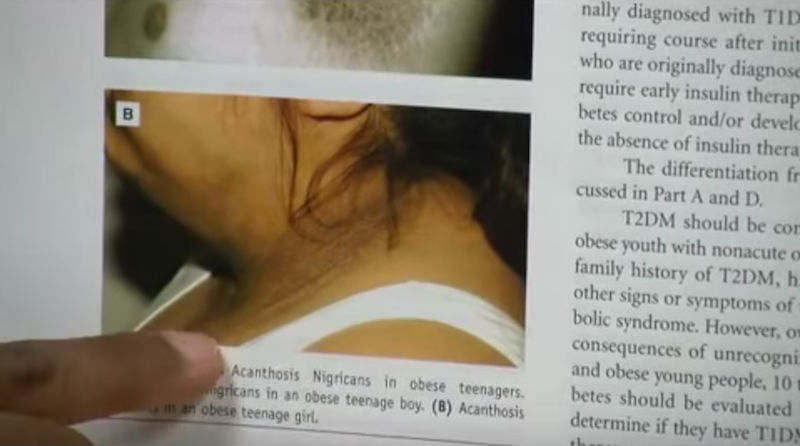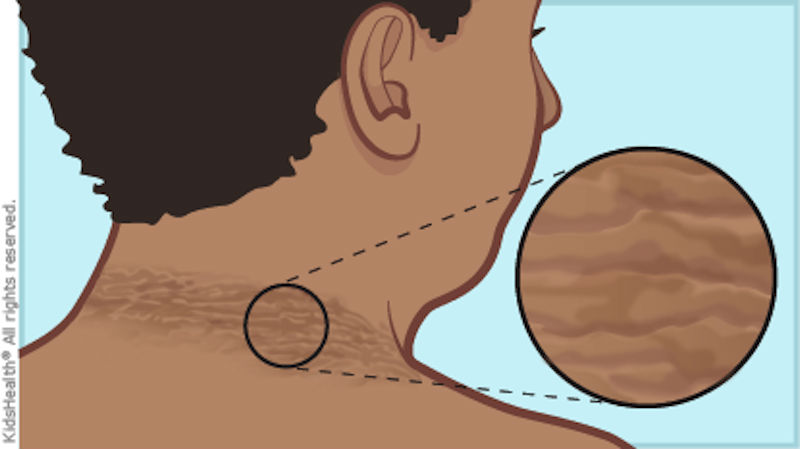As obesity rates among kids has continued to climb in recent years, so have cases of Type 2 diabetes among children and teens.
14-year-old Pantera learned this firsthand when she began to notice sudden changes in her health. She was thirsty all the time and suffered from headaches and mood swings. But there was something else. Pantera had a strange, dark-colored ring around her neck. At first, her mother thought it was just dirt — but that ring became the red flag that alerted her to Pantera's Type 2 diabetes.
Doctors say that if you see this ring, it means your insulin isn't working properly. This could signify Type 2 diabetes, a lifelong condition that affects the way your body metabolizes sugar.
In addition to the neck, this dark pigmentation — known as "acanthosis nigricans" — can also be found on the underarms or groin. According to AOCD.org, the elevated insulin levels in the body activates insulin receptors in the skin, forcing it to grow abnormally and cause extra pigment in the skin.
Scroll down to see what this strange ring looks like…
H/T: ABC News

14-year-old Pantera noticed she was thirsty all the time. She suffered from frequent headaches. Her family noticed mood swings. Not to mention, there was also a strange ring around her neck that resembled dirt — but this peculiar ring was the red flag that alerted doctors to her Type 2 diabetes.
Now, Pantera has to test her blood sugar and give herself shot of insulin every single day.

Doctors say the dark, thick ring behind the neck could be a sign that your insulin isn't working properly.
Type 2 diabetes is a chronic, lifelong condition that affects your insulin levels and the way your body metabolizes glucose, or sugar.

This ring pigmentation is called acanthosis nigricans, and it can also be seen on on the armpit and groin. According to AOCD.org, the elevated insulin levels in the body activates insulin receptors in the skin, forcing it to grow abnormally and cause extra pigmentation.

Experts say Type 2 diabetes is more common among young people than ever. It also progresses more rapidly in kids and is harder to treat. That's why Pantera and her mom are hoping their story will inspire other families to make healthier lifestyle changes.
"I'd like other parents to know that it can happen to your child even if you're not diabetic and no one in your family is diabetic, it can happen," Pantera's mom told ABC News. The things that you're feeding your children that you think are okay for your children — the chicken nuggets, and the french fries, and the chips — it's not okay. You really have to monitor what you eat because it really does have a lifelong affect on their health."
If you notice any strange marks or pigmentation on your skin, see your doctor immediately. Please SHARE this important information with your friends on Facebook!




